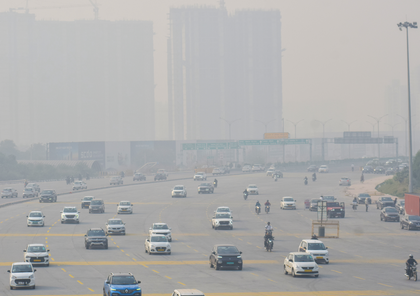SC judge flags rising pollution in Delhi, urges advocates to avoid physical appearances
By IANS | Updated: November 13, 2025 21:10 IST2025-11-13T21:05:22+5:302025-11-13T21:10:12+5:30
New Delhi, Nov 13 Supreme Court judge Justice P.S. Narasimha on Thursday urged advocates to avoid physical appearances ...

SC judge flags rising pollution in Delhi, urges advocates to avoid physical appearances
New Delhi, Nov 13 Supreme Court judge Justice P.S. Narasimha on Thursday urged advocates to avoid physical appearances in apex court proceedings and instead opt for virtual hearings, warning that Delhi’s toxic air could cause “permanent damage.”
The observation came from the Bench, which also comprised Justice Atul S. Chandurkar, as multiple lawyers appeared physically before the top court despite the national capital recording “severe” pollution levels for several days.
“Situation is very, very serious! Why are you all appearing here?” Justice Narasimha remarked. “We have the virtual hearing facility. Please avail it. This pollution will cause permanent damage,” he added.
When senior advocate Kapil Sibal pointed out that several lawyers were already using masks to protect themselves, Justice Narasimha said: “Even masks are not enough. It will not suffice,” adding that he would discuss the issue with the Chief Justice of India (CJI) to explore further steps.
Justice Narasimha’s observation highlights the top judiciary’s growing concern over the health impact of Delhi’s foul air — an issue the apex court has been monitoring through a separate Bench led by CJI BR Gavai.
Earlier this week, the CJI Gavai-led Bench had directed the governments of Punjab and Haryana to file detailed affidavits outlining the measures undertaken to prevent stubble burning.
It had also taken note of submissions that while GRAP-III is currently in force, the prevailing pollution levels warrant implementation of GRAP-IV — the most stringent stage of anti-pollution measures.
Senior advocates appearing in that matter, including Gopal Sankaranarayanan and Aparajita Singh (amicus curiae), had warned the court that the situation had become “very dangerous”, with AQI levels breaching the 450 mark in several areas.
Despite repeated judicial directions, the Supreme Court has expressed dissatisfaction with the states’ inability to prevent the seasonal spike in pollution.
Disclaimer: This post has been auto-published from an agency feed without any modifications to the text and has not been reviewed by an editor
Open in app